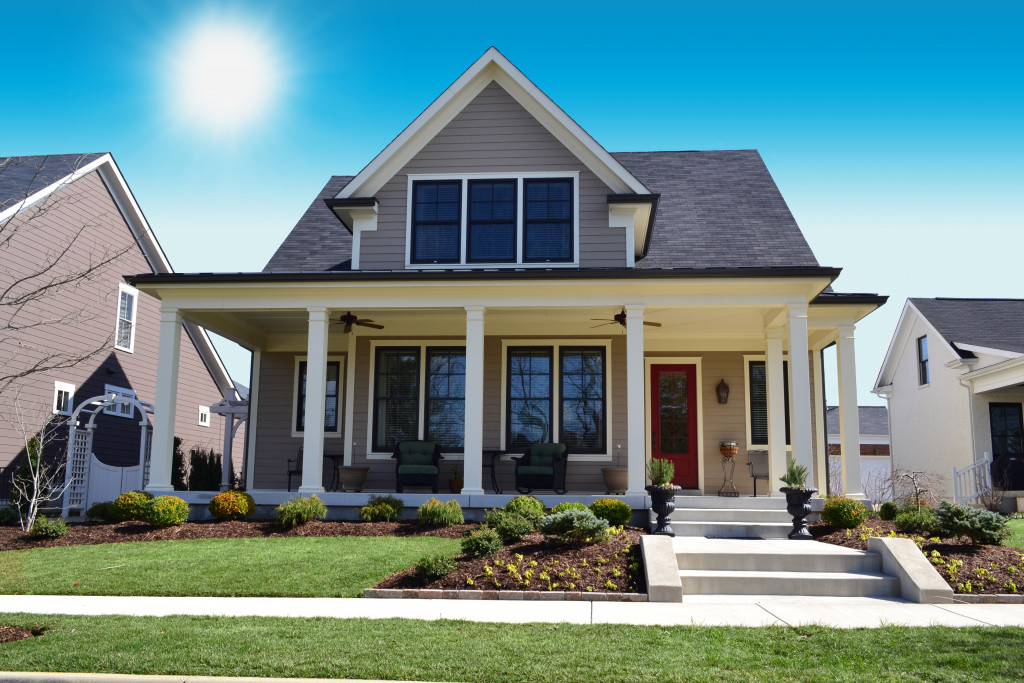- Developing a comprehensive budget considering all facets of constructing the ideal home is crucial for a successful project.
- Determining the perfect home style that suits your lifestyle and needs is crucial.
- The design should include energy efficiency features to reduce carbon footprint and save money effectively. This not only promotes sustainability but also offers significant cost savings.
- Consider the advantages and disadvantages of custom and pre-built homes to determine the optimal choice.
Building a dream home is an exciting and rewarding undertaking. It allows you to create something that reflects your unique style while providing a comfortable place for you and your family to live. But it can also be overwhelming if you don’t take the right steps in planning for it. To ensure success, there are several tips you should consider before starting construction on your dream home.
Create a realistic budget.

Creating a realistic budget is essential when planning to build a dream home. A budget allows you to manage your finances and ensure you will not overspend during construction. When creating your budget, it is important to consider all aspects of building your dream home, from the foundation to the finishing touches.
One critical factor in creating a realistic budget is finding land for sale that fits within your financial means. You should assess different pieces of land and choose one that offers the best possible value for your money. This involves researching the location, assessing its suitability for building, and ensuring you can afford the land. By planning and creating a realistic budget before starting the building process, you can avoid unnecessary stress and financial burdens.
Find the right location.
Proper site selection is crucial when planning to build a home. Finding the right location can make all the difference in the longevity and safety of the structure. One major factor to consider is the topography of the land. It is important to ensure that the land is level enough to build on and that there are no hazards such as sinkholes or unstable soil.
The location of the property near the sun is also important. The sun’s position can impact the amount of natural light and heat that enters the home. A proper site also considers the potential impact of natural disasters such as floods, hurricanes, and earthquakes. All these factors must be carefully considered before purchasing a plot of land to ensure the dream home can be built on a safe and sustainable foundation.
Know what kind of home you like.
Knowing what kind of home you like is important because it will help you determine the size and type of home that best suits your needs. Here are some things to consider when doing this:
Choose your home style.
Choosing a home style is crucial when building a house that suits your needs and preferences. The style encompasses an array of available architectural designs, and it is essential to find one that complements your lifestyle. The right home style should be a reflection of your personality while also meeting your practical requirements.
A well-considered style choice will ensure your house feels comfortable with an excellent flow of space and abundant natural light. If you get it right, your home should be an extension of you, and you will feel surrounded by your preferred aesthetic and energy. However, the home style can be daunting, so it’s important to rely on professionals and research to be confident in your decision.
Consider energy efficiency.

Designing a home with energy efficiency in mind is becoming increasingly important in the current climate. Energy efficiency refers to the amount of energy used to power your home and the steps taken to reduce unnecessary usage. Making energy-efficient design choices can significantly impact both the environment and your bills.
By incorporating energy-efficient features such as solar panels, double-glazed windows, and insulation, homeowners can reduce their carbon footprint and save money in the long run. It is essential to consult with professionals such as architects, builders, and energy consultants to ensure that you incorporate the most efficient features that meet your specific needs and preferences.
Weigh the pros and cons of custom vs. pre-built homes.
When deciding to build a new home, weighing the pros and cons of custom versus pre-built homes is essential. Each option offers unique benefits that ultimately impact your dream home’s design, functionality, and overall cost.
Custom homes provide the freedom to design a home perfectly suits the homeowner’s wants and needs. It allows for greater control over every aspect of the home, including layout, style, and materials used in the construction process.
However, opting for a custom home requires more time investment and budget commitment. Pre-built homes, on the other hand, offer affordability and convenience, with pre-designed layouts and designated contractors.
Use universal design principles.
Universal design principles are essential to remember when planning any residence’s layout. This design approach aims to create environments that are accessible and user-friendly for people with varying needs and abilities. It is all about ensuring that the living space is welcoming, functional, and safe for all individuals, regardless of age or physical ability.
Utilizing universal design concepts can increase the home’s longevity, thus reducing the need for renovations and retrofits in the future. When considering these principles, it is important to consider features such as doorways that can accommodate wheelchairs, non-slip flooring, and zero-step entrances.
Expertly crafting your dream home requires thorough planning and careful consideration. Consider these essential tips for a comfortable, safe, and personalized space. Thoughtfully plan each process step, researching to bring your vision to life.
